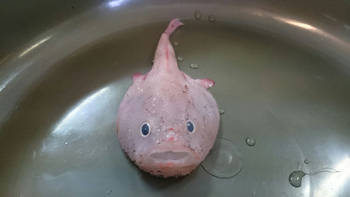The end of our voyage on the R/V Dr. Fridtjof Nansen is approaching, and last week we visited one of our final destinations: the Valdivia bank. This is one of the areas in the southeastern Atlantic were there is an active deep sea bottom fishery. This particular fishery targets crabs using traps and the CAMPOD video was able to capture some splendid images of these crabs guarding their nests on the flat, hard bottom covered with a thin layer of sand.
Here, we were lucky enough to find a site suitable for the bottom trawl and the samples we collected from the trawl gave us a chance to have a better look at all the species observed in the video. The sample catch included a basket full of crabs (species Chaceon erytheiae) and several fish species that live on the seafloor. We weren’t expecting such a variety of species and the identification was particularly challenging with our team of experts working all night long.
On Sunday we reached our very last sampling station before steaming back towards Walvis Bay;, the Ewing seamount. This was one of the deepest sampling sites and we had our first encounter with schools of a species of deep-sea fish called orange roughy (Hoplostethus atlanticus). This deep-sea fish is one of the main target species of bottom fisheries in several regions and is also considered one of the most vulnerable ones because of the particular life history traits of the species. Studies have shown that this species reaches maturity between 20 and 40 years old and is particularly slow-growing and long-lived: the oldest reported orange roughy was 140 years old!
In our last trawl at Ewing seamount we also caught a considerable number of deep-sea sharks, including two species of catsharks and numerous lanternsharks. My friend Paul, the shark expert on board, has a lot of work ahead of him during the next month in South Africa where he will take a closer look at these shark species and other deep-sea cartilaginous fish, with the goal of identifying each species for the national museums where the species will be stored and displayed.
On a final note, here’s a shout-out to a small blob of a fish called a pink frogmouth (Chaunax pictus). We pulled this one up in our sample from Valdivia seamount.




